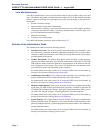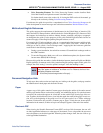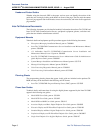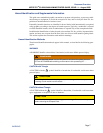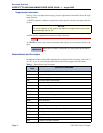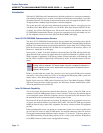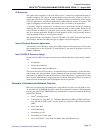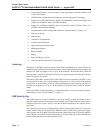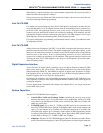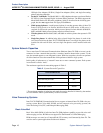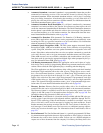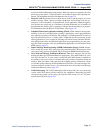
Product Description
INTER-TEL
®
CS-5200/5400 ADMINISTRATOR GUIDE, ISSUE 1.1 – August 2005
Page 12 Introduction
Introduction
The Inter-Tel 5000 Network Communications Solutions platform is a converged communica-
tions platform designed for use in small- and medium-sized business environments. It provides
an Internet Protocol (IP) solution for telecommunication needs and supports IP phones, Inter-
Tel digital phones, standard single line phones, and other endpoints.
The system provides call processing and business productivity features, messaging services
with Basic Voice Mail (BVM) and Fax over IP (FoIP), Wide Area Network (WAN) Fail Sur-
vivability, and a Power Fail Bypass relay. On the main chassis of the platform, the Inter-Tel
CS-5200/5400 Communication Servers, are ports for connecting two loop start trunks, two sin-
gle line endpoints, external voice mail, Music On Hold (MOH), and Paging.
Inter-Tel CS-5200/5400 Communication Servers
The Inter-Tel CS-5200/5400 Communication Servers furnish the processing power and the
integration hardware and circuits for the Inter-Tel 5000 Network Communications Solutions
platform. The communication servers function identically, but the Inter-Tel CS-5200 provides
fewer IP resources than the Inter-Tel CS-5400. For an explanation of IP resources, refer to “IP
Resources,” which follows on this page.
In this guide, a “trunk” is an audio path that connects the Inter-Tel 5000 with the public tele-
phone network. Both systems can support between 2 and 92 non-IP trunks. In addition, the CS-
5200 is capable of supporting 28 IP gateway trunks, IP network trunks, or IP endpoints, and
the CS-5400 is capable of supporting 116 IP gateway trunks, IP network trunks, or IP end-
points.
BVM is provided with the system, but o increase voice mail capacity BVM can be replaced
with either a Voice Processing Unit (VPU) or an Enterprise® Messaging (EM) system. For
details, refer to “Voice Processing Features” on page 257
.
Digital signal processors (DSP) enable Conferencing, Dual Tone Multi-Frequency (DTMF)
detection, tone generation, modem operation, and Automatic Number Identification (ANI).
ANI is the technical term for Caller ID.
Inter-Tel Network Capability
Two or more Inter-Tel advanced communication platforms, Axxess or Inter-Tel 5000, can be
connected with T1/E1/PRI network spans to form a network. To the user, the network appears
as one integrated system. With few exceptions, the user can perform all of the functions across
the network that can be performed within a single system, or node.
In an Inter-Tel IP private network environment, IP endpoints can be programmed to traverse,
or bypass, the Network Address Translation (NAT) tables. The Inter-Tel 5000 may be placed
behind the firewall using a static NAT assignment. For details, contact you Inter-Tel equipment
provider.
Either communication server can operate as a stand-alone system or as a node in a network of
up to 63 Inter-Tel Axxess or Inter-Tel 5000 nodes. For network connectivity, Inter-Tel Axxess
®
Converged Communications Platforms require software v7.0 or later for T1 point-to-point pro-
tocol (PPP) networking. IP networking requires v8.231 or later system software, IP Resources
Card (IPRC) firmware v9.0.0 or later, and applicable licensing.
NOTE
System capacities cited in this guide refer to the maximum number possible before
making resource tradeoffs. The actual number of trunks or endpoints installed on a
system depends on the user’s requirements and the physical constraints and con-
figuration of the system.



